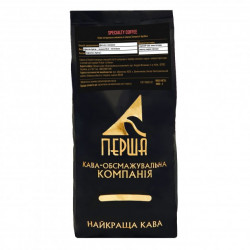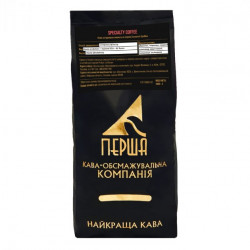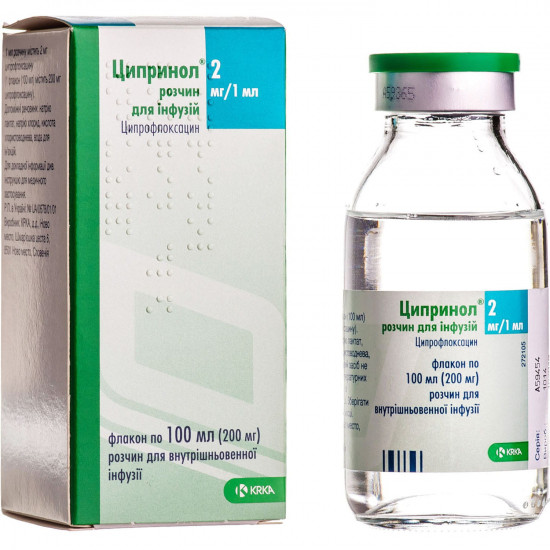
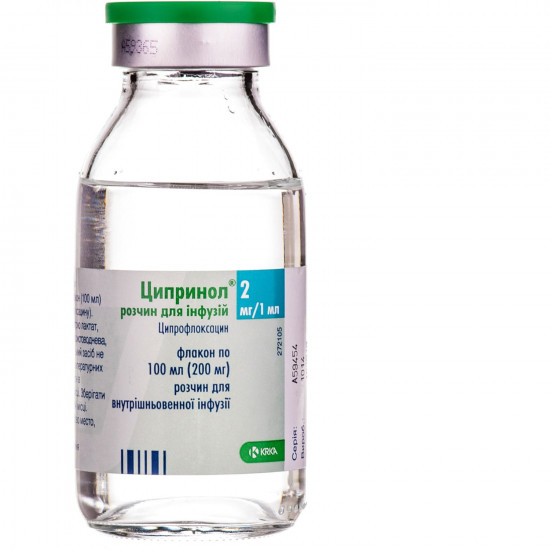
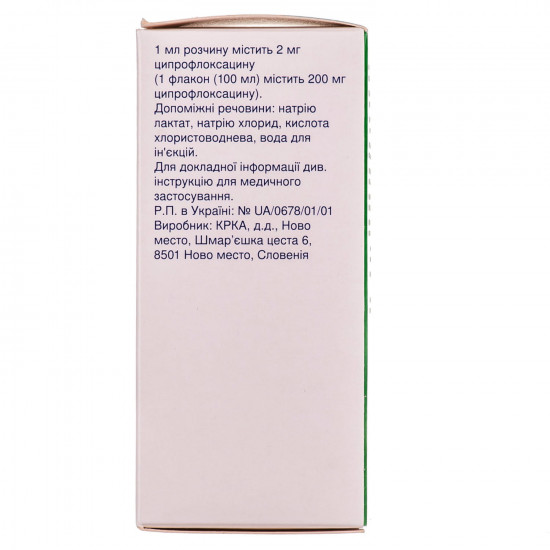
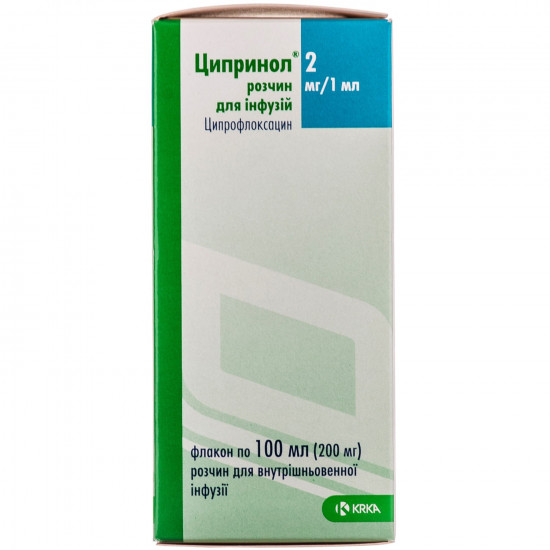




- Stock: In Stock
- Model: 176394
0% Customers recommend this product
-
5 Awesome0%
-
4 Great0%
-
3 Average0%
-
2 Bad0%
-
1 Poor0%
Reviews Over Tsiprinol solution for inf. 2mg/ml fl. 100 ml
- (0)
Total Reviews (0)
click here write review to add review for this product.
Report this review.
Description
Tsiprinol ® , solution for infusions, is shown for treatment of following infections (see the Sections "Pharmacological Properties" and "Features of Application"). Before therapy it is necessary to pay special attention to all available information on resistance to ciprofloxacin.
Should consider official recommendations about appropriate use of antibacterial medicines.
Adult
- Lower respiratory tract infection, caused by gram-negative bacteria:
- exacerbation of a chronic obstructive disease of lungs;
- bronchopulmonary infections at cystous fibrosis or at bronchiectasias;
- pneumonia.
- Chronic purulent average otitis.
- Exacerbation of chronic sinusitis, especially if it is caused by gram-negative bacteria.
- Infection of an uric path.
- Infectious damages of a reproductive system:
- orchiepididymitis in particular caused by sensitive strains of Neisseria gonorrhoeae;
- inflammatory diseases of bodies of a basin in particular caused by sensitive strains of Neisseria gonorrhoeae.
- Infection of digestive tract (for example diarrhea of travelers).
- Intraabdominal infections.
- Infection of leather and soft tissues, caused by gram-negative bacteria.
- Heavy course of otitis of an external ear.
- Infection of bones and joints.
- Inhalation anthrax (prevention after contact and radical treatment).
Ciprofloxacin can be applied at treatment of patients with a neutropenia if there is a suspicion that fervescence is caused by a bacterial infection.
Children and teenagers
- Bronchopulmonary infections at a mucoviscidosis caused by Pseudomonas aeruginosa.
- Complicated infections of urinary tract and pyelonephritis.
- Inhalation anthrax (prevention after contact and radical treatment).
Ciprofloxacin can be applied to treatment of heavy infections at children and teenagers if it is considered necessary.
Treatment only the doctors having experience of treatment of fibrosis and/or heavy infections at children and teenagers have to carry out(see the Sections "Pharmacological Properties" and "Features of Application").
Structure
active ingredient: ciprofloxacin;
1 ml 2 mg of ciprofloxacin in the form of a lactate;
Excipients: sodium a lactate, sodium chloride, hydrochloric acid, water for injections.
Bactericidal effect of ciprofloxacin as ftorkhinolonovy antibacterial agent it is caused by ability to suppress type topoisomerases II (DNK-girazu and topoisomerase IV) which are necessary in many processes of a life cycle of DNA, such as replication, transcription, reparation and recombination.
Contraindication
- Hypersensitivity to ciprofloxacin or to any other component of medicine and also to others of ftorkhinolon.
- Simultaneous use of ciprofloxacin and a tizanidin through clinically significant side effects (arterial hypotension, drowsiness) connected with increase in concentration of a tizanidin in blood plasma (see the Section "Interaction with Other Medicines and Other Types of Interactions").
Dose is determined by
according to indications, weight and the place of an infection, sensitivity of the activator (activators) to ciprofloxacin, function of kidneys of the patient, and at children and teenagers - by body weight.
Duration of treatment depends on disease severity, features of a clinical picture and type of the activator.
Method of administration
ciprofloxacin Solution for infusions should be checked visually before application. Solution should be applied if there are signs of turbidity.
Ciprofloxacin should be entered intravenous infusion. For children duration of infusion is 60 minutes.
At patients time of infusion is 60 minutes for 400 mg of solution of ciprofloxacin for infusions and 30 minutes - for 200 mg of solution of ciprofloxacin for infusion. Slow infusion in a big vein minimizes discomfort of the patient and reduces risk venous irritation.
Solution of medicine can be entered divorced or after addition to others of infusion solutions (see the Section "Incompatibility").
Only for single use. The smallest volume - 50 ml.
Any unused solution it is necessary forutilizovata.
Children
ciprofloxacin Use to children and teenagers should be carried out byaccording to the existing official recommendations. Treatment using ciprofloxacin the doctor with experience of treatment of the children and teenagers sick with cystous fibrosis has to carry out and/or heavy infections.
Ciprofloxacin caused Arthropathies of basic joints in unripe animals. Growth of quantity of cases an arthropathy, connected with use of medicine, was statistically insignificant. However treatment it is necessary to begin with ciprofloxacin of children and teenagers only after careful assessment of a ratio advantage / risk for possible risk of development of the side reactions connected with joints and/or surrounding fabrics.
Feature of application
Use during pregnancy or feeding by a breast
Pregnancy
Data on use of ciprofloxacin show to pregnant women lack of development of malformation or feto-neonatal toxicity. Animal experiments do not indicate direct or indirect toxic impact on reproductive function. At young animals and animals who were subject to influence of hinolon till the birth the influence on unripe cartilaginous tissue therefore it is impossible to exclude the probability that medicine can be harmful to articulate cartilages of newborns / fruit was observed. Therefore during pregnancy for the purpose of prevention of undesirable influences one fruit better to avoid use of ciprofloxacin.
feeding Period a breast
Ciprofloxacin gets into breast milk. Through potential risk of injury of articulate cartilages at newborns ciprofloxacin should not be applied during feeding by a breast.
Ability to influence speed of response at control of motor transport or other mechanisms
Ciprofloxacin can affect ability of the patient to steer motor transport and to work with mechanisms through reactions from nervous system. Therefore the ability to steer motor transport or work with mechanisms can be broken.
toOverdose
byIt was reported that overdose in a dose of 12 g led to symptoms of moderate toxicity. Overdose in a dose of 16 g led to development of a sharp renal failure. Symptoms of overdose were included by dizziness, a tremor, a headache, spasms, fatigue, hallucinations, confusion of consciousness, abdominal discomfort, a renal and liver failure and also a crystalluria and a hamaturia. Recorded also reverse renal toxicity.
Krom of ordinary actions of emergency aid, for example gastric emptying with consecutive intake of medical carbon, is recommended monitoring of function of kidneys, in particular definition rn urine and in case of need - increase in its acidity for prevention of the phenomena of a crystalluria. Patients have to accept enough liquid.
Antacids, calciferous or magnesium, can theoretically reduce absorption of ciprofloxacin at overdose.
byBy a hemodialysis or peritoneal dialysis removes only a small amount of ciprofloxacin (<10%).
in case of overdose needs to perform symptomatic treatment. ECG monitoring should be carried out through a possibility of continuation of an interval of QT.
toSide reactions
byit was Most often reported about such side reactions on medicine as nausea, diarrhea, vomiting, passing increase in level of Transaminases, rash and local reactions in the injection site.
Data on side reactions on the ciprofloxacin medicines received in the course of clinical trials and post-marketing observation (oral, parenteral and consecutive routes of administration) are given bybelow.
Interaction with other medicines and other types of interactions
Ciprofloxacin, as well as other ftorkhinolona, it is necessary to appoint with care to the patients receiving medicines which extend QT interval (for example antiarrhytmic means of the class IA and III, tricyclic antidepressants, macroleads, anti-psychotics) (see the Section "Features of Application").
Storage conditionsto Store
in the place protected from light. Drug does not demand special temperature storage conditions. To store out of children's reach.
Expiration date - 5 years.
Specifications
| Characteristics | |
| Active ingredients | Ciprofloxacin |
| Amount of active ingredient | 2 mg/ml |
| Applicant | KRK |
| Code of automatic telephone exchange | J01MA02 Ciprofloxacin |
| Interaction with food | It doesn't matter |
| Light sensitivity | Sensitive |
| Market status | The branded generic |
| Origin | Chemical |
| Prescription status | According to the prescription |
| Primary packing | bottle |
| Producer | KRK D.D. |
| Quantity in packing | 100 ml |
| Release form | solution for infusions |
| Route of administration | Infusional |
| Sign | Import |
| Storage temperature | from 5 °C to 25 °C |
| Trade name | Tsiprinol |










